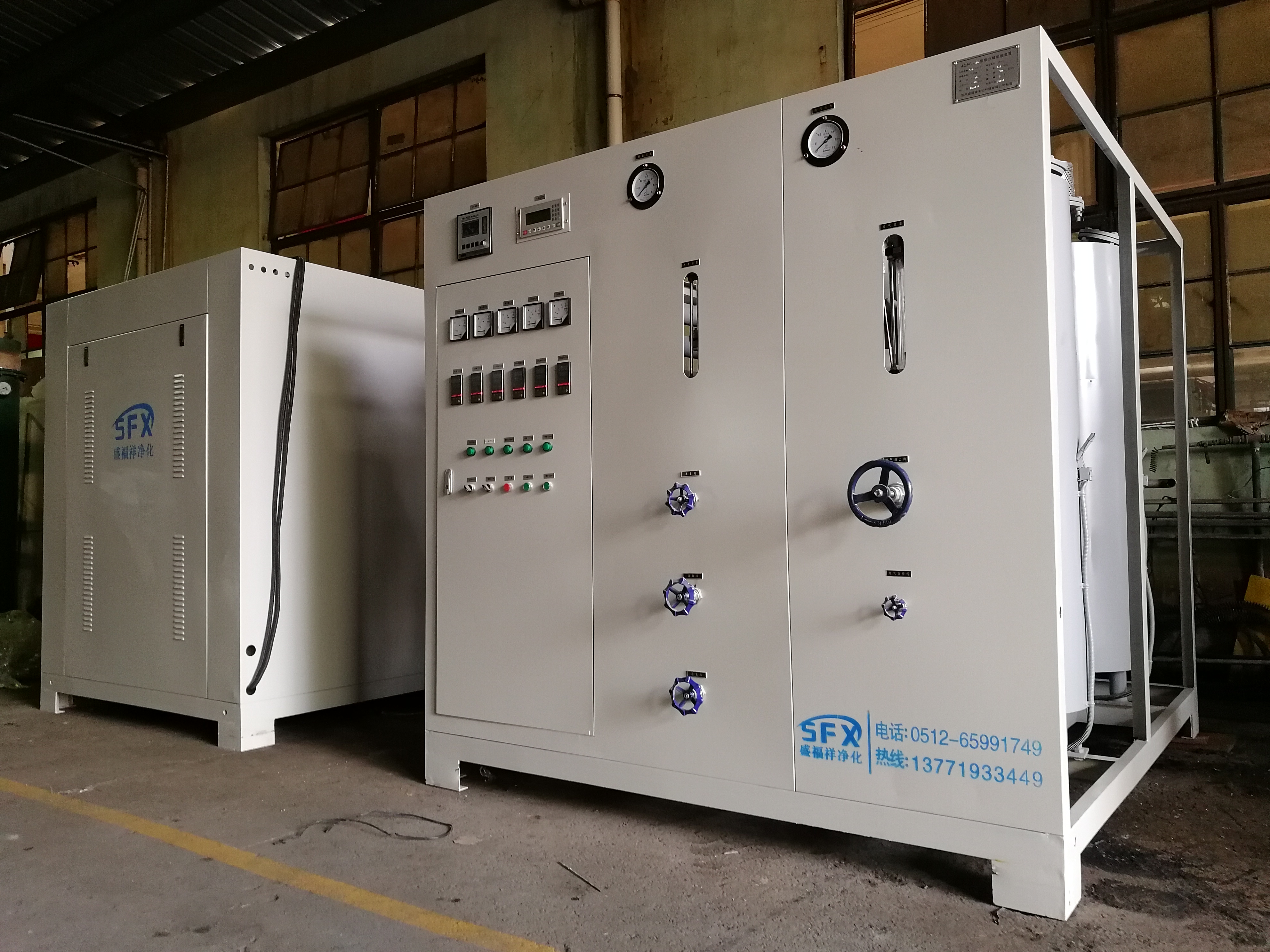

Working principle: The ammonia decomposition gas generation device uses liquid ammonia as the raw material. After vaporization, the ammonia is heated to a certain temperature. Under the action of a catalyst, ammonia decomposes into a hydrogen nitrogen mixture gas. 1kg of liquid ammonia can be completely decomposed to produce 2.64Nm3/h of hydrogen nitrogen mixture gas.
The chemical equation for ammonia decomposition is as follows: 2NH3=3H2+N2-22080 calories
Main technical indicators for ammonia decomposition hydrogen production: flow rate: 5-300Nm3/h
Residual ammonia amount: ≤ 500ppm
Oxygen content: ≤ 3ppm
Dew point: ≤- ten
Pressure: 0.1-0.09MPa
Device features:
Less equipment investment: mature and simple technology, short process, and low price; It still has high economic efficiency for extracting pure hydrogen.
Low operating costs: Liquid ammonia raw materials are cheap, with low energy consumption and high efficiency, making it the most economical source of nitrogen hydrogen mixed protective atmosphere.
Reliable performance and long service life: High quality catalyst, heat-resistant stainless steel liner, nickel chromium alloy electric heating element, and stainless steel valve ensure the service life of the entire system.
Easy installation: With a modular structure, it has a small volume, compact structure, and no need for infrastructure. Once water, electricity, and inlet/outlet pipes are connected, it can be put into normal production.
Easy to use and maintain: By using an automatic temperature controller to control temperature and adjusting the flow rate through valves, continuous and stable air volume can be obtained without the need for specially trained operators.
High safety: low decomposition pressure, truly anaerobic hydrogen production and anaerobic environment, ensuring system safety.
Application of ammonia decomposition hydrogen production unit:
1. The protective gas used in the bright annealing of materials such as black, colored, and mechanical industries, including plates, strips, wire coils, pipes, and standard parts.
2. Applied in sintering processes of powder metallurgy, tungsten molybdenum materials, hard alloys, electronic materials, etc.
3. Applied to tin bath protection gas in float glass production.
4. Applied to sintering high-temperature refractory materials.
5. Applied as reducing gas in the chemical industry.
SFX series gas purification device
working principle:
Using ammonia decomposition gas as the main raw material gas, molecular sieves are used to adsorb water and residual ammonia. Two sets of adsorbers work alternately, with regeneration taking place alternately.
Technical indicators after purification: Flow rate: 5-3000Nm3/h
Residual ammonia content: ≤ 3ppm
Oxygen content: ≤ 3ppm
Dew point: ≤- 70℃
Pressure: 0.1-0.09MPa
Process flowchart:
SFX series gas purification device
Working principle: Using ammonia decomposition gas as the main raw material gas, molecular sieves are used to adsorb water and residual ammonia. Two sets of adsorbers work alternately, with regeneration taking place alternately.
Main technical indicators:
Gas production rate: 5-1000Nm3/h
Gas composition: 75% hydrogen, 25% nitrogen
Work pressure:< 0.1Mpa
Purified residual ammonia:< 2ppm
Dew point after purification: < -60 ℃
